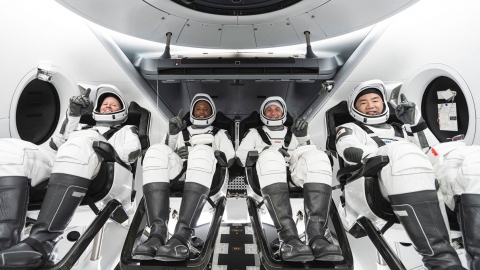NASA's latest video lets viewers experience the universe from the perspective of a spacecraft as it flies past Jupiter and its largest moon. The images of Jupiter and Ganymede are projected in a spherical format and then edited in post-production to create movement.
The images show bright and dark patches as well as impact craters on Ganymede. Shortly after capturing images of Ganymede, Juno also flew past Jupiter for 3 hours.
Ganymede is Jupiter's largest natural satellite and the largest moon in the Solar System. It is even larger than Pluto, which was once considered a planet. Ganymede orbits Jupiter every just over 7 days.

 VI
VI EN
EN




























